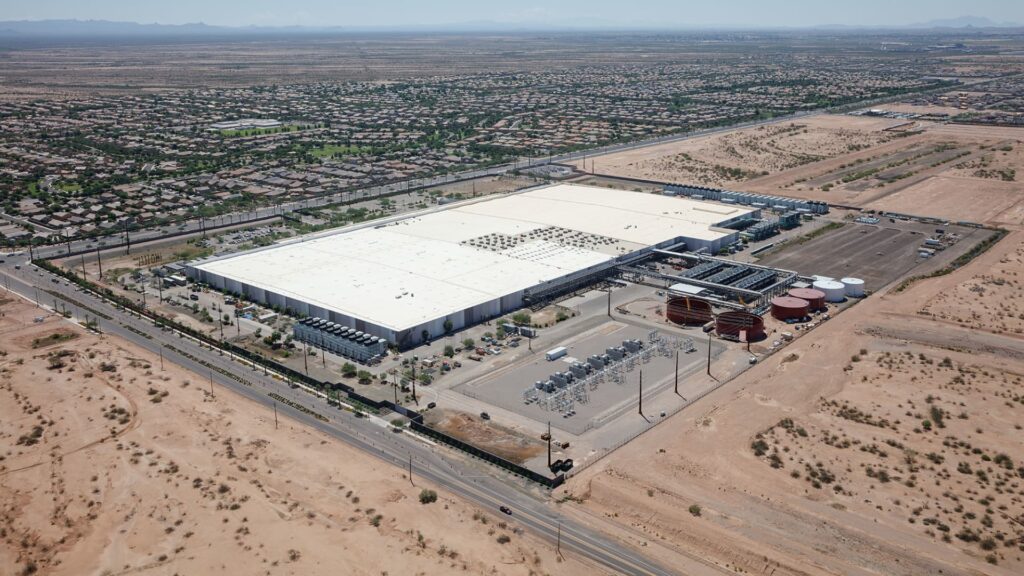Aerial view of Apple data center in Mesa near Phoenix, Arizona, USA, August 6, 2017. Photo taken on August 6, 2017. Apple plans to build its second data center in China in Ulankyab City, Inner Mongolia Autonomous Region.
Jim Todd | Reuters
A version of this article first appeared in the CNBC Property Play newsletter with Diana Orrick. Property Play covers new and evolving opportunities for real estate investors, from individuals to venture capitalists, private equity funds, family offices, institutional investors and large publicly traded companies. Sign up to receive future editions directly to your inbox.
The sudden surge in data demand is rapidly creating new commercial real estate sectors, not only data centers but also so-called quantum real estate and power land.
The former refers to structures designed to house specialized quantum computers. The latter focuses on ensuring a reliable and sufficient power supply to prepare the land and make it ready for data center operations. That land must be secured with the necessary permits, utilities, and infrastructure to power the data center.
There are currently approximately 20,000 acres of power land under active data centers around the world. Approximately 40,000 acres, or approximately 2 billion square feet, of energized land will be required to support current data center growth projections over the next five years, according to a new research paper from global real estate investment manager Hines. That’s an area the size of just under three Manhattans, or about 1.5 times the size of Paris.
Hines, which has been developing data centers for more than 20 years, has pivoted to a new business in just the past year. We are currently securing permissions and rights for our hyperscale site. What that means on the ground is mapping the power grid, negotiating with landowners, and providing financial guarantees to grid operators who are now seeking it.
“The challenge is no longer about building walls; it’s about delivering megawatts to the field,” said David Steinbach, global chief investment officer at Hines. “Hines is focused on this front-end work of making the land AI-enabled before any buildings are built.”
Steinbach said electrified land has become its own investable asset class because power rights themselves are rare and valuable. Once grid connectivity and permissions are secured, it will have created a tradable asset with clear demand from hyperscalers and carriers, he said.
The competition for power-ready land is being led by tech companies and energy producers rather than real estate developers, but Hines clearly doesn’t want to be left behind.
“The smartest capital today is not chasing square footage, it’s enabling computation,” Steinbach said, citing recent deals with Nvidia and Intel to co-develop chips for data centers and personal computers. ”Nvidia5 billion dollar bet intel This is not just a chip deal, but a seismic signal that AI infrastructure is the new oil. ”
In August, Silver Lake, a global private equity firm focused on technology investments, announced the launch of the Powered Land Platform for data center development in collaboration with Commonwealth Asset Management, a real estate and infrastructure investment firm. The company plans to deploy $400 million in capital to “build a global portfolio of strategically located powered land sites to address critical input gaps to meet growing demand for data centers,” according to a news release.
The platform currently operates targeting high-growth markets in the US, Canada and the UK, where access to electricity is increasingly scarce.
“This investment represents a long-term commitment to not only meet the immediate need for AI-driven data center growth, but also to position the company as a future leader in digital infrastructure and a one-stop shop for high-growth developers and hyperscalers,” Lee Wittlinger, Silver Lake’s managing director, said in a release. “Our innovative approach to land and power solutions, combined with our strategic relationships with leading energy partners, will enable us to meet the evolving demands of hyperscalers with a holistic and differentiated approach.”
Data center hubs will now need to expand beyond already crowded markets like Northern Virginia and into power-rich regions of the Midwest and Texas. Hines’ research paper points out that there is currently a huge opportunity in Europe, where a lack of supply and growing demand mean huge potential for both developers and investors. It also highlights the Middle East as an emerging market with growth potential, with governments investing heavily in artificial intelligence, renewable energy and grid infrastructure.
This is not to say that this new concept of power land is without challenges, such as securing suitable land, managing title processes with local authorities, and working with power companies to obtain sufficient commitments.
“This is not just a technical thing,” Steinbach said. “This is the story of a building cycle that will reshape where and how the real estate business will develop over the coming decades.”


